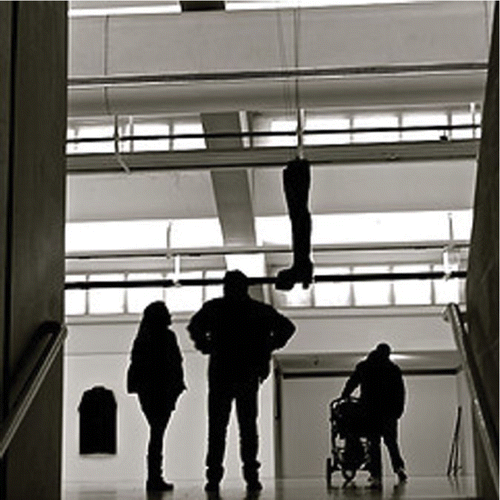A Fine Disregard
The Disabling Art Museum
It was in an art museum that I first learned that I was disabled. Born with mild cerebral palsy, I was never good at heights; stairs without handrails presented a challenge, and uneven sidewalks were something that I had to negotiate carefully. Still, I had backpacked across Europe, played tennis, and traveled alone through Asia, not to mention the hundreds of museum exhibitions I attended. Several years ago, however, when walking through Counter Space at the Museum of Modern Art, my legs grew stiff and heavy. I needed to rest and catch my breath; waves of feverish nausea swept over me and it was hard to take a step. Somewhere towards the middle of the exhibition – I found myself unable to get back to the main hallway, and I began to panic about falling down. One of the guards informed me that if I went downstairs I could get one of the wheelchairs provided by the museum; but I soon realized my problems were only just beginning. Having never even sat in a wheelchair, I had no idea how to move one around; having to maneuver the wheelchair around the groups of tourists and school children that filled the gallery space was like parallel parking a minivan in the middle of a playground. Finally, I worked out a workable rhythm: I would push the chair to a viewing point away from the flow of traffic, sit down, look at the work as best as I could, find another out-of-the-way spot, get up, push the chair to the next point, sit down… again, and again, and again. Afterwards, I returned the wheelchair to the guard and walked out of the museum. It was perplexing: I had walked into, and out of, the museum able-bodied, yet inside the museum I had been ‘disabled’. Now, back on the street, I was able-bodied once more.
